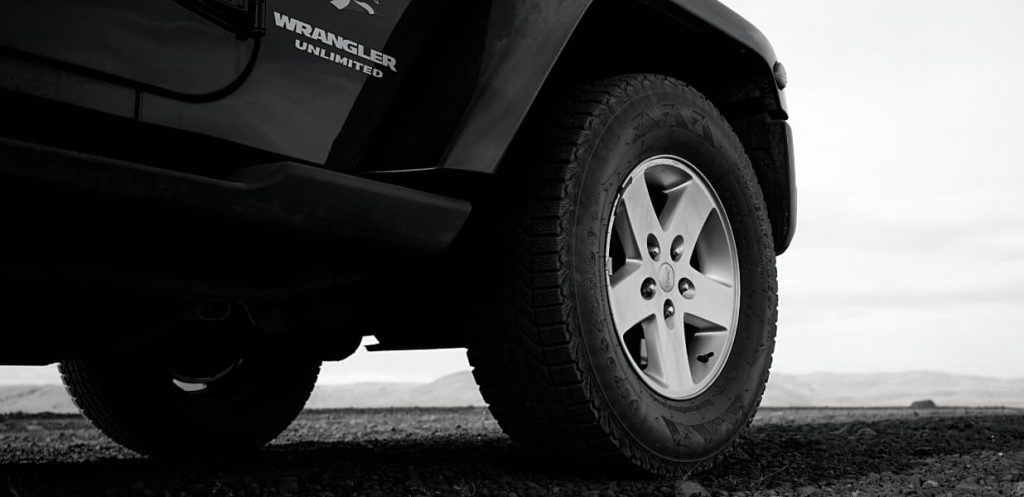
Although it might seem pretty easy to choose the best tyres, you would be surprised to find out that many cars don’t have the proper tyres. Be it a mistake or not, driving with the wrong ones can make driving more difficult, damage the suspensions, and be dangerous for you and other drivers. By choosing the right ones, you can avoid all of these unpleasant scenarios and get the most out of them.
Here are some things to keep in mind when choosing the right ones for you.
The most important thing is that the tyres have to match your car and to make sure of this you need to know how to read the numbers on the side of each tyre. You also have to take into account the energy label and choose the right ones for the season.
Understanding the numbers on the tyre

205/55 R16 / 87V
205/55 R16 – Is the overall tyre size
205 – The width of the tread in millimetres
55 – Aspect ratio (in this case, it means that the height is 55% of the width)
R – Radial (the construction type)
16 – Wheel diameter in inches
87 – The load index is the maximum weight that a tyre can carry safely.
V – The speed rating refers to the maximum speed that can be reached while carrying the load defined by the load index.
Usually, the manufacturer applies a label on the car with the details of the optimal tyres. This can be found on the inside frame of the driver’s side door, in the glove box, on the inside of the fuel tank cap, or the inside of the trunk lid. If you still cannot find this label, these details can also be found on the vehicle owner manual.
European Energy Label

According to the current European legislation, energy labels have to be displayed on new tyres with information about their performance, such as rolling resistance, wet grip class, and external noise.
The rolling resistance refers to the fuel consumption of the tyre. Class A represents the lowest consumption and class G the highest. The more efficient the class, the more expensive it is.
The wet grip class refers to the braking distance on wet ground and is also represented alphabetically. A-tyres are the safest, with the shortest braking distance.
The noise level is displayed in decibels and refers to noise caused by rolling. Off-road ones are usually considered noisy.
Seasonal Tires
The main category of tyres is the season: summer, winter and all-season. It’s important to choose the right ones for the season.
Summer tyres are recommended when temperatures are above 7 °C or 44 °F. The rubber used in summer ones is harder in order not to deform at high temperatures. Summer tyres have a high degree of flexibility, which helps you drive easier and with less fuel. They give you a superior grip on dry land. It’s not recommended to use them in winter because at low temperatures, they harden and lose their grip drastically.
Winter tyres are made of softer rubber and for temperatures below 7 °C or 44 °F. The rubber maintains its flexibility at low temperatures, and the pronounced grooves ensure a proper grip on water or snow. It is not recommended to use them in summer. At high temperatures, the braking distance increases and you are in danger of an accident. The MS or M + S inscription means they’re for mud and snow.
All-season ones offer a common denominator between summer and winter tyres. If you live in an area with mild seasons, you can avoid worrying about changing them by opting for an all-season set. But if you live in a place with hot summers and harsh winters, it is best to opt for seasonal ones that offer you the highest performance.
Conclusion

It is important to take into account all these criteria and more.
Another factor to think of is your driving style. If you like to drive more sporty, testing the limits of your car, then we recommend you opt for tyres with a good wet grip class. But if you drive more carefully, then you can go for ones with a low consumption class to save fuel. And if you drive mainly on rural roads or gravel, choose a set of all-terrain tyres for better traction.
You should also know that the perfect ones to cope with all seasons, all driving styles, and all terrains do not exist yet, but if you take into account all the criteria listed, you can find the right tyres for you. Now that you have all this information, you are ready to buy a new set according to your preferences and needs.
To find the right ones, browse our catalogue. If you need more information you can also read the articles about 4×4 or truck tyres.
Don’t forget to follow us on Facebook, Instagram, Youtube, Linked In, Tik Tok and Pinterest.
